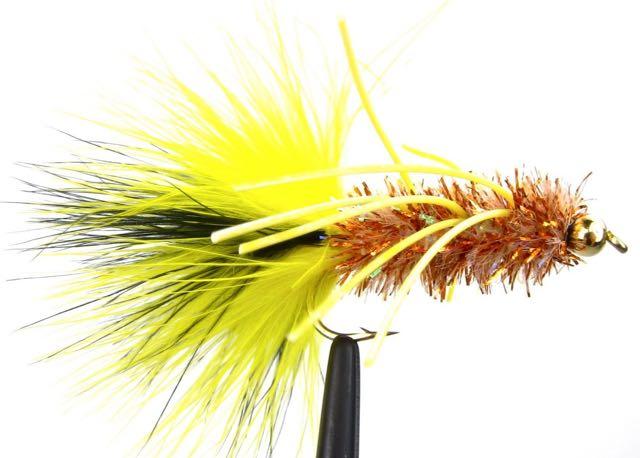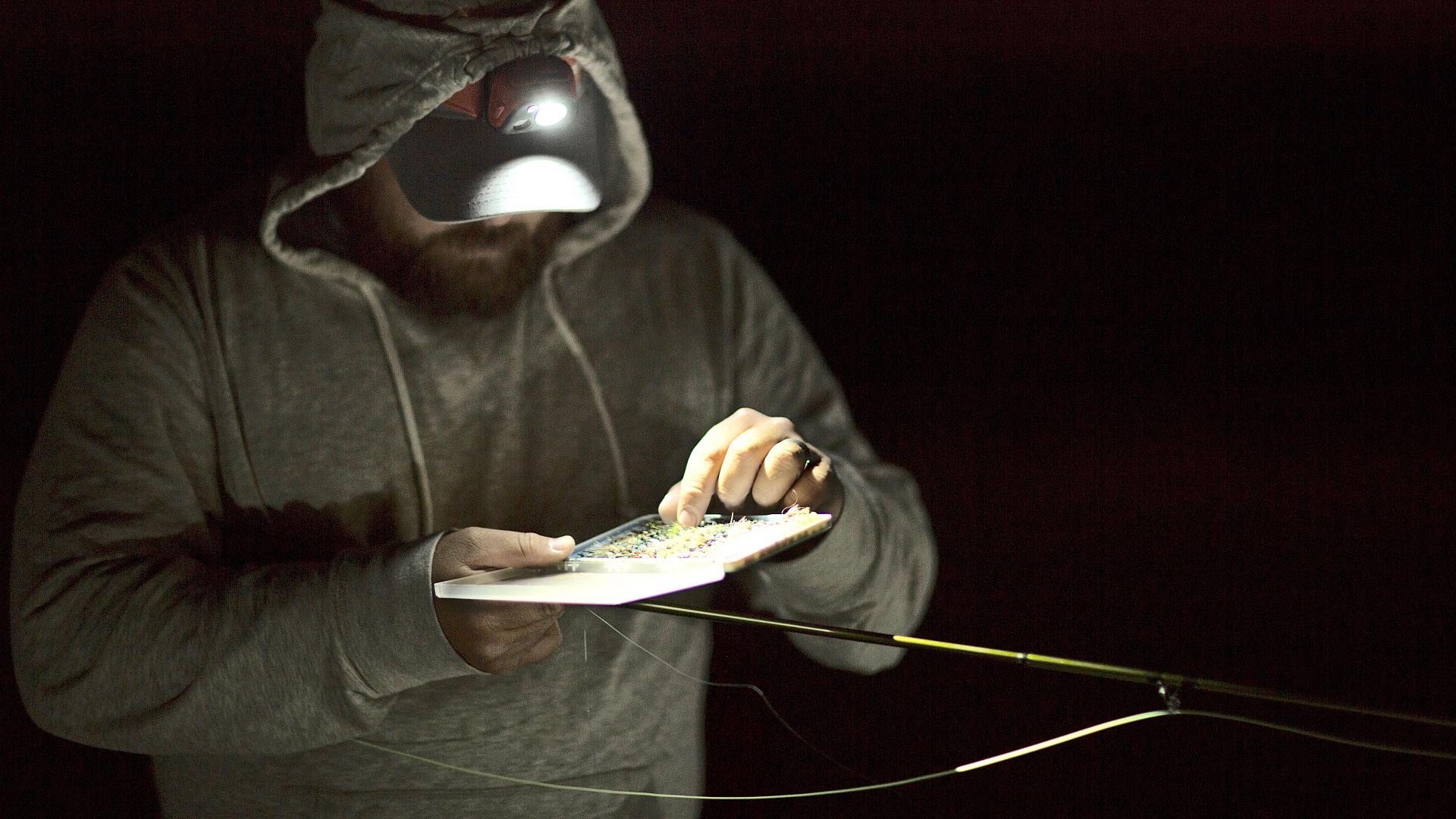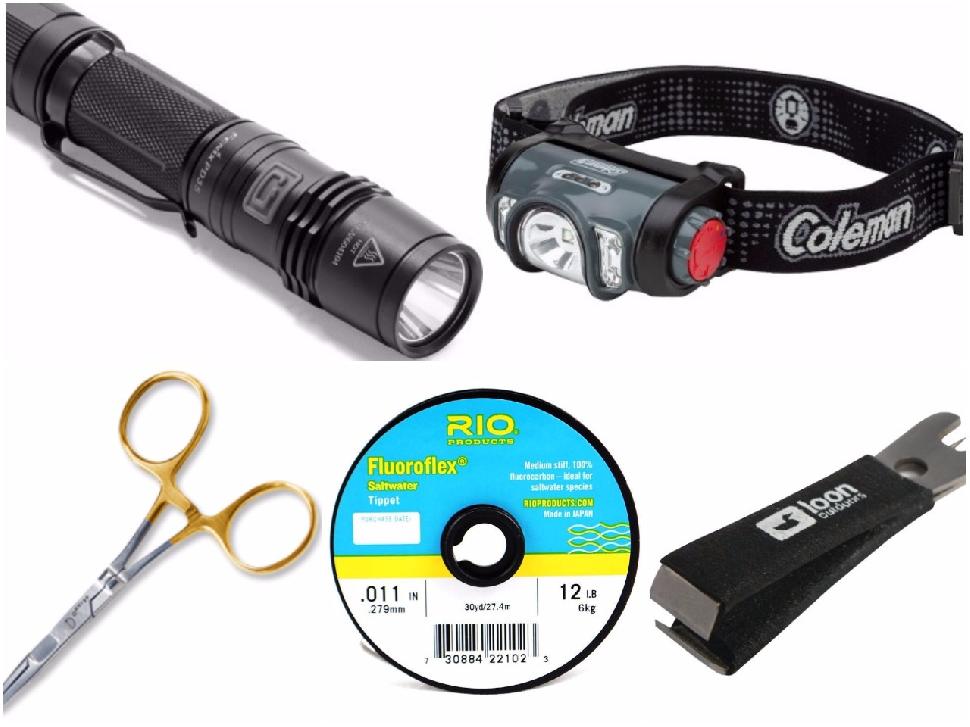Fly by night
Essential tips, gear and techniques for fly fishing at night—when the big ones emerge
Advertisement
It’s no secret that the biggest fish often emerge from their lairs to greedily feed under cover of darkness, especially during the dog days of summer. But not everyone knows that sunset is also an excellent time to get out the fly rod. Nighttime brings fish into the shallows, where fly tackle is in its element, especially for bass and trout. The same factors that make night fishing so exciting also present some complications, but it’s nothing a modestly talented fly angler can’t handle. Here are a few tips for fly fishing ’round midnight.
Plan
Advertisement
After dark, only fish the shoreline of a river or lake that you know intimately, and even then, stick to easy-to-navigate areas; if you’re wading, don’t go in more than ankle deep. It’s also wise to scout even familiar areas in daylight to look for fresh hazards. If you’re unwilling to do this for the obvious and sensible safety reasons, then do it to help you catch fish. Make sure you’ll have room for your backcast, and get a feel for what direction and how far you’ll have to cast.
Gear
On a summer night, the only accessories you really need are nippers, forceps, a small spool of tippet and, of course, some lighting (below). I bring along a headlamp so I can work on tackle with both hands, and a powerful flashlight for finding my way. And at least one of your lights should be waterproof, just in case.
Advertisement
For tackle, stick to a floating line, which is easier to see, control and cast. And use a short, strong leader, such as six feet of 10- or 12-pound monofilament. The fish won’t be leader shy, and once they’re hooked you need to stop them from fleeing into any unseen cover.
Advertisement
As for flies, pick patterns that are easy to see and make some noise (see “Night flies”). Even if the fish aren’t in shallow water, they will be looking up to feed, so avoid heavily weighted flies. This isn’t the time to bounce a Clouser Deep Minnow along the bottom, especially given how annoying hang ups are in the dark.
Technique
Casting is probably the most intimidating part about fly fishing at night, but it doesn’t have to be. To avoid tangles, keep your casts short and limit your false-casting. Then the key is timing your cast by feel rather than looking over your shoulder at your backcast. Honestly, this isn’t difficult and it’s a skill any intermediate fly angler should have.
One of the thrills of night fishing is the way your other senses wake up when you can’t see. It’s amazing how accurately you can track—and cast to—the sound of a rising fish. Whether you’re sound- or blind-casting, use a slow, steady retrieve, not the erratic movement that’s most effective in daytime. I saw this in action one night when I was fishing a surface popper with a random tug-tug-tug-pause movement. Just as I paused, a smallmouth went airborne a foot ahead of my fly—exactly where it would have been had I kept it moving.
In rivers, along with your usual spots, fish the shallow muddy banks, tail-outs and other spots you’d ignore in daytime. At night, these areas teem with baitfish, and that draws in the predators, especially big trout. I stick to the basic presentations: casting dry flies upstream and across, and swinging subsurface flies down and across. On even a short line, the swing is simple, effective and the fish tend to hook themselves.
It’s difficult to describe the combination of excitement and discomfort you experience when you’re connected to a struggling fish, with no idea where or what it is, until it emerges from the inky blackness. Being on the water at night is such a different experience that landing even small fish is thrilling. But take it from me—they won’t all be small.
Night flies

After dark, you need flies that move water so the fish can track them by vibration as well as by sight. A good pattern has features such as a bulky head, voluptuous body or pulsating wing. Here are some good bets.
ON TOP: Popping, sliding or diving bass bug, Irresistible, Morrish Mouse, Muddler Minnow, Stimulator
BELOW: Lefty’s Deceiver, Muddler Minnow, TeQueely (above), Zonker


